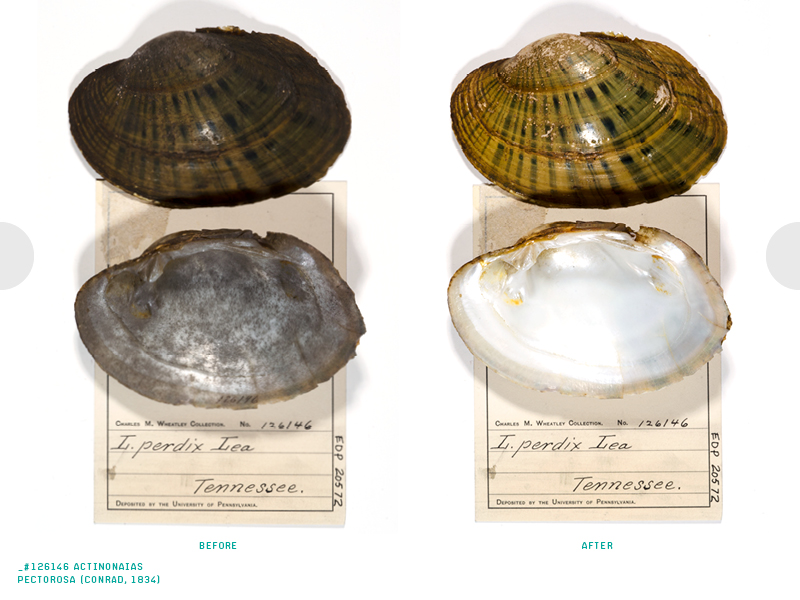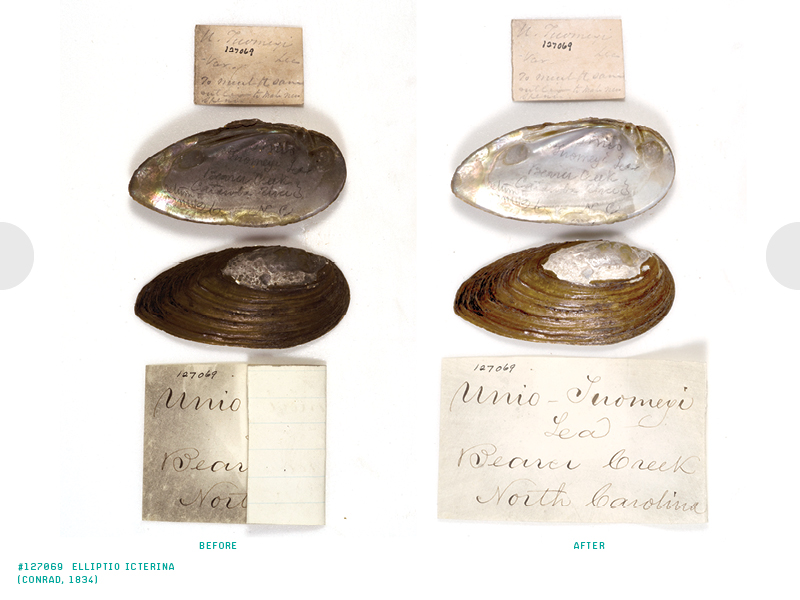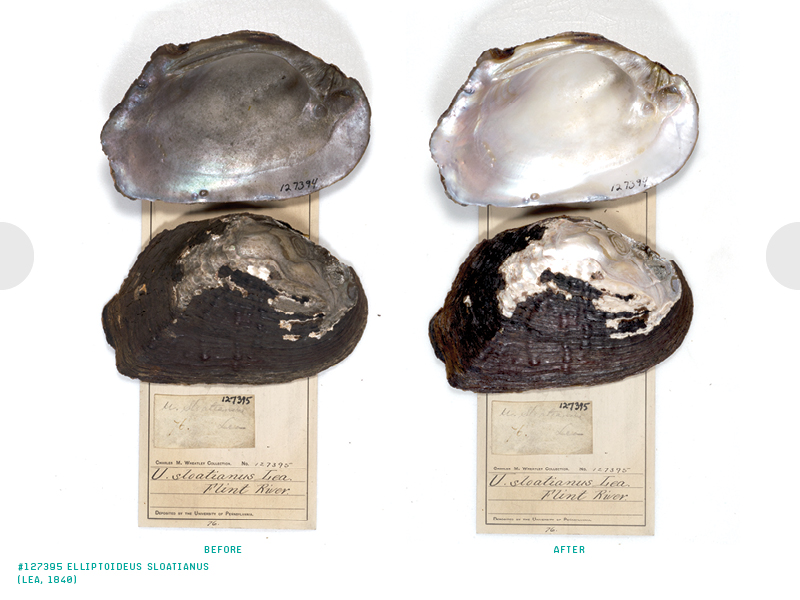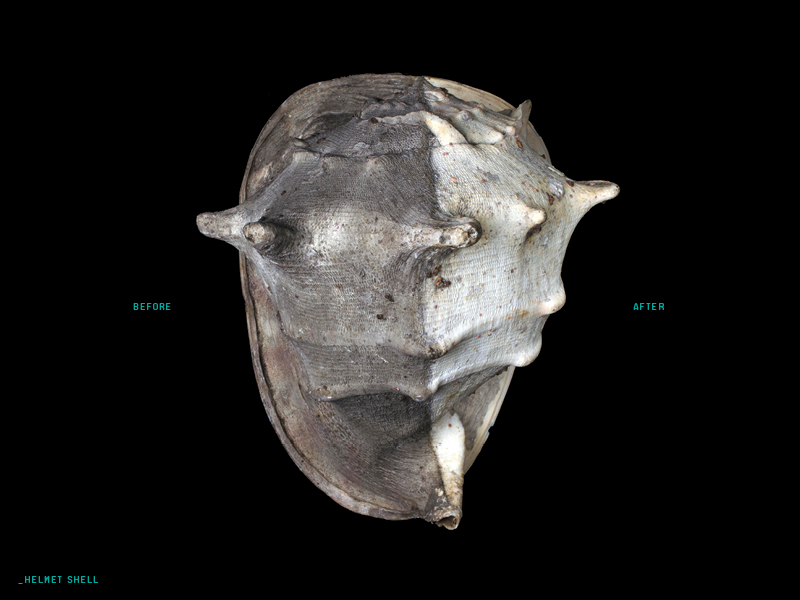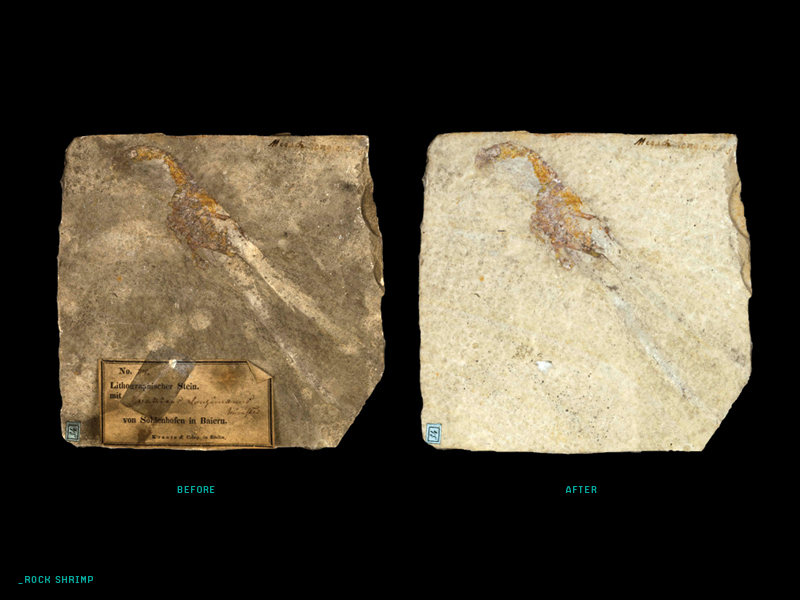Staff at the Academy of Natural Sciences of Drexel University launched a large-scale cleaning program for the academy’s freshwater mussels collection to bring back some of the shine to shells that have been gathering dust for decades.
It is the first major overhaul of the mussel collection since the 1950s, when the shells were moved into closed cabinets. In this new effort, staff have been placing the shells in archival trays within the Academy’s new cabinets and updating their systematic order to current standards. Volunteers and students have assisted by cleaning individual shells and labels.
Many of the older mussel specimens in the collection are covered in thick layers of soot. In the days before air conditioning, windows remained open from spring to fall to counter the summer heat, and particles coated the surfaces of these significant shells for up to a century where they lay in glass cabinets or open trays. A few blocks from the Academy’s location on the Benjamin Franklin Parkway was the gigantic Baldwin Locomotive Works, which ran coal-fired foundries day and night. A short distance in the other direction lay the Reading Railroad tracks, where dozens of steam trains passed through each hour. Cheap Pennsylvania coal also powered steam tractors, ferries, ships and cranes. For more than two centuries, houses and buildings throughout the city were heated with it. The air was black with fine soot, which oozed through the tiniest gaps in cabinets and doors to settle on the exhibits.
Volunteers and students have used special pads to clean the specimen labels and display boards, and paper wipes soaked in distilled water to clean the blackened mussels. The process releases the distinctive odor of anthracite coal, but for the most part, the thick coating has caused little damage to the shells underneath.
— Paul Callomon, Malacology Collection manager. Previously printed in the Academy of Natural Sciences of Drexel University annual report Science Matters.
_#126146 ACTINONAIAS PECTOROSA (Conrad, 1834)
The photograph on the left shows the shells prior to being cleaned; on the right, the clean shells. Over their lifetime of many decades, mussels rarely move far, but they continually add layers to their shells. The rate at which they grow can be measured in these layers down to individual days and reveals environmental factors such as water temperature and food availability. At the same time, mussels incorporate into their shells and tissues substances in the surrounding water, such as metals and chemical compounds. With their dates of collection known, the shells in this collection form a priceless and irreplaceable archive of environmental conditions stretching back into the 18th century.
_#127069 ELLIPTIO ICTERINA (Conrad, 1834)
Before and after.
_#127135 ELLIPTIO DOWNIEI (Lea, 1858)
Before and after.
#127395 ELLIPTOIDEUS SLOATIANUS (Lea, 1840)
Freshwater mussels (Unionoidea) such as these make up the largest single section of the academy’s roughly 10 million mollusk specimens. They are found in rivers, streams, lakes and ponds all over the world, with particular richness in North America.
_HELMET SHELL
Only the right side of this helmet shell (Cassis cornuta) has been cleaned, showing the extent of soot contamination in parts of the old collection.
_ROCK SHRIMP
This Jurassic fossil shrimp from the famous Solnhofen quarries in Germany was acquired by the Academy over a century ago. Cleaning has restored the exquisite detail that characterizes fossils from this iconic place, the home of the fossil bird Archaeopteryx.


